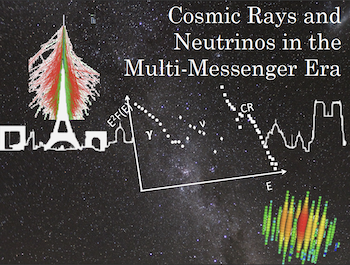Description
The detection of a high-energy neutrino from the flaring blazar TXS 0506+056 and the subsequent discovery of a neutrino excess from the same direction have strengthened the hypothesis that blazars are cosmic neutrino sources. The lack, however, of gamma-ray flaring activity during the latter period challenges the standard scenario of correlated gamma-ray and high-energy neutrino emission in blazars. We propose that TeV-PeV neutrinos are produced in coincidence with X-ray flares that are powered by proton synchrotron radiation. In this case, neutrinos are produced by photomeson interactions of protons with their own synchrotron radiation, while MeV to GeV gamma-rays are the result of synchrotron-dominated electromagnetic cascades developed in the source. This "pure hadronic flaring" hypothesis has several interesting consequences. The X-ray flux is a good proxy for the all-flavor neutrino flux, while certain neutrino-rich X-ray flares may be dark in GeV-TeV gamma-rays. Lastly, hadronic X-ray flares are accompanied by an equally bright MeV component that is detectable by proposed missions like e-ASTROGAM and AMEGO. Using the extreme blazar 3HSP J095507.9+355101 as a test bed, we show that the number of muon and antimuon neutrinos above 100 TeV during hadronic flares can be up to $\sim3-10$ times higher than the expected number in standard leptohadronic models.
| Related session | Multi-messenger |
|---|

